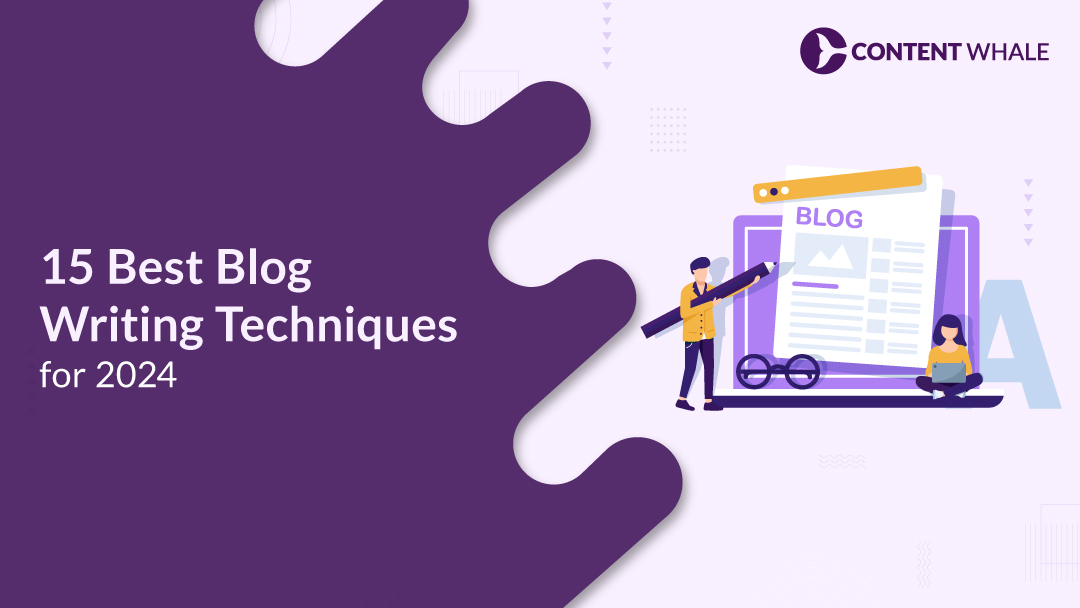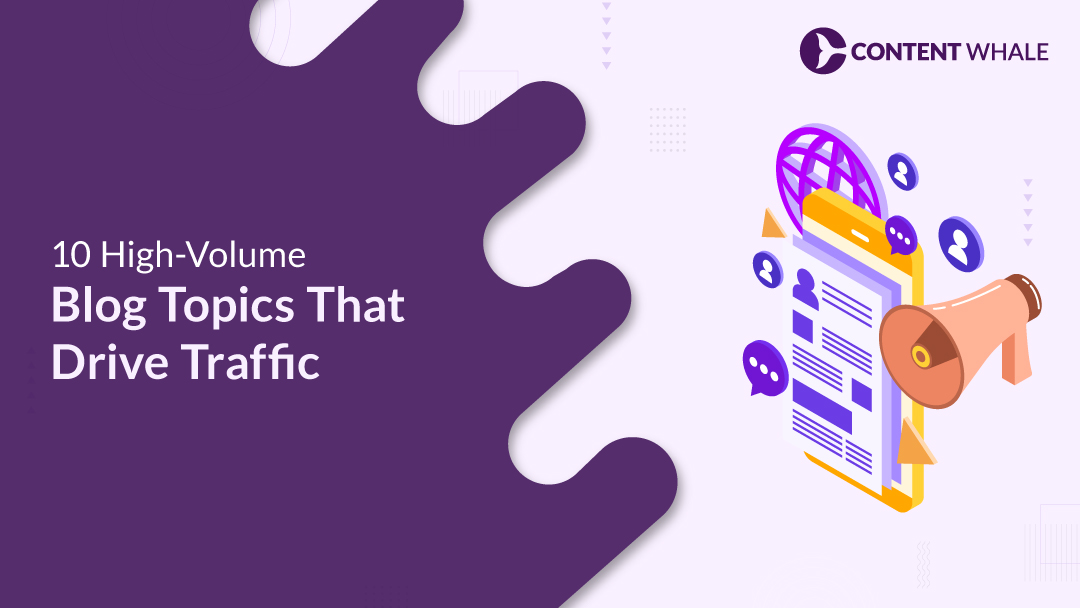Staying up-to-date with the latest blog writing techniques is essential for keeping your content fresh and engaging. As we move further into 2024, readers expect more than just informative text—they’re looking for content that is both easy to digest and optimized for search engines. That’s where mastering new blog writing tips can make all the difference.
By focusing on effective blog writing strategies, you can improve the structure, readability, and SEO of your posts. These approaches help your blog rank higher and keep readers coming back for more. In this guide, we’ll explore 15 actionable content writing strategies that will not only boost your SEO efforts but also make your posts more appealing in blogging in 2024. Whether you’re just starting out or looking to refresh your skills, these tips are designed to help you create engaging blog content that stands out.
1. Start with a Captivating Headline
Your headline is the first impression readers get, so it needs to be compelling enough to encourage clicks. Crafting a captivating headline is an essential step in effective blog writing techniques. Here’s how to make sure your title grabs attention:
A) Key Headline Strategies:
- Incorporate Numbers: Readers love listicles. Headlines like “15 Best Blog Writing Techniques for 2024” work well because they promise clear, organized content.
- Use Power Words: Words like “Ultimate,” “Essential,” or “Proven” can evoke curiosity. For instance, “Master These 10 Effective Blog Writing Tips” encourages readers to learn actionable advice.
- Focus on Benefits: Clearly state the benefit or outcome for the reader. A headline like “Boost Engagement with These Blog Writing Tips” tells the reader exactly what they’ll gain from reading your post.
B) SEO Considerations:
- Primary Keyword Integration: Ensure your primary keyword appears naturally within your headline. For example, “Top Blog Writing Techniques to Improve SEO in 2024” combines both engagement and SEO relevance.
- Keep It Concise: Aim for 6-8 words for better readability and click-through rates. Shorter headlines also perform better on mobile devices.
2. Focus on the Reader’s Pain Points
Engaging blog content thrives when it addresses the specific pain points of your readers. By solving their problems, you offer value, building trust and loyalty.
A) How to Identify Reader Pain Points:
- Research online communities: Forums like Reddit and Quora are gold mines for discovering common questions and concerns.
- Analyze your site’s data: Use tools like Google Analytics to examine search queries driving traffic to your site. These often highlight the issues your audience is facing.
- Monitor social media discussions: Pay attention to what your target audience is discussing on platforms like Facebook and LinkedIn groups.
B) Why It Matters:
Focusing on these pain points not only enhances engagement but also helps establish your blog as a valuable resource. By creating posts that directly address your readers’ struggles, you provide actionable solutions that resonate with them.
C) Tips for Writing Solutions:
- Be specific: Provide practical steps and solutions that your readers can apply.
- Relate to your audience: Show empathy by acknowledging their struggles before offering solutions.
- Use conversational language: This keeps the tone approachable and builds rapport.
3. Use Short Paragraphs for Better Readability
Short paragraphs play a significant role in improving the readability of your blog posts. Readers often skim through content, and long blocks of text can overwhelm them. Breaking up your writing into smaller, digestible chunks makes it easier for your audience to follow and retain information.
A) Here’s why short paragraphs matter:
- Enhanced User Experience: Concise paragraphs prevent your readers from feeling bogged down by walls of text. This makes your blog post more accessible and engaging.
- Better for Mobile Devices: With many readers accessing content on mobile devices, short paragraphs help improve readability on smaller screens, reducing the need for excessive scrolling.
- Scannability: Blog readers often skim articles to find relevant information quickly. Short paragraphs combined with subheadings and bullet points allow them to locate key points faster.
4. Incorporate Visuals to Break Up Text

Visuals are essential for breaking up text and keeping readers engaged in your blog posts. Adding images, infographics, or videos can significantly boost user experience and make complex information more digestible. Studies show that posts with images get 94% more views, and they are more likely to be shared on social media.
A) Types of Visuals to Use:
- Images and Photographs: High-quality, relevant images make your blog more visually appealing and help explain ideas more effectively. Avoid generic stock photos where possible; personalized or branded visuals add authenticity.
- Infographics: These are excellent for simplifying complex information like statistics or data-heavy topics. Infographics make data easy to understand and improve retention, as people are more likely to remember visuals than text alone.
- Videos: Embedding video tutorials, product demos, or interviews adds depth to your content. Video content is not only engaging but also highly shareable, driving more traffic to your blog.
- Screenshots and Data Visualizations: For step-by-step guides or tutorials, screenshots help readers follow along easily. Charts and graphs are also useful for presenting trends and comparisons.
B) Best Practices:
- Always ensure visuals are optimized for SEO by using appropriate alt text.
- Keep images high-quality and ensure they align with the topic to avoid distracting readers.
- Use visuals strategically to break up long sections of text, making your content more scannable and enjoyable.
5. Optimize for SEO with Relevant Keywords

SEO is essential to ensure that your blog reaches its intended audience. When you optimize your blog posts with relevant keywords, search engines can better understand your content, improving your ranking and visibility. Here’s how to do it effectively:
| # | Steps | Description | Benefits |
| 1 | Conduct Thorough Keyword Research | Use tools like Ahrefs or Semrush to find relevant primary and secondary keywords. | Identifies the most relevant search terms to drive traffic to your blog. |
| 2 | Place Keywords Strategically | Integrate keywords naturally into titles, headers, meta descriptions, and body content. | Improves search engine visibility without keyword stuffing. |
| 3 | Optimize for Long-Tail Keywords | Focus on conversational, long-tail keywords that match search intent. | Captures more targeted traffic and boosts rankings for specific queries. |
| 4 | Use Keywords in Headers and Subheadings | Include your keywords in H1, H2, and H3 tags to structure the content clearly. | Enhances readability and helps search engines understand the content. |
| 5 | Optimize Images with Alt Text | Use keywords in image alt text to make the content more accessible to search engines and users. | Improves ranking in image search results and boosts page SEO. |
| 6 | Internal and External Linking | Link to relevant internal pages and authoritative external sources with keyword-rich anchor text. | Improves site navigation and credibility, while spreading ranking power. |
| 7 | Monitor Keyword Performance | Use analytics tools to track keyword performance and adjust your strategy accordingly. | Ensures continuous optimization for improved SEO results. |
- Start with Keyword Research: Before writing, identify your primary keyword (the main topic) and secondary keywords (related subtopics). Use tools like Google Keyword Planner or Ahrefs to find terms your audience is searching for. For example, if you’re writing about blog writing techniques, related terms could include SEO blog writing and effective blog writing.
- Strategic Keyword Placement: Place your primary keyword in the blog’s title, the first 100 words, and naturally throughout the content. Also, use it in the meta-title, meta-description, and URL for better optimization. Don’t forget to add secondary keywords in subheadings (H2, H3 tags) and in the body of your text.
- Optimize Images: Ensure every image includes relevant alt text and descriptive file names that feature your target keywords. This helps search engines understand the context of the image, improving your blog post optimization.
- Linking: Incorporate both internal links (linking to other posts on your site) and external links to authoritative sources. This boosts SEO by increasing the credibility and depth of your post.
6. Add Internal and External Links
Internal and external links are crucial for both SEO blog writing and improving user experience. Here’s how you can effectively use them:
A) Internal Links:
Internal links guide users to other pages on your website, helping them explore related topics and stay longer on your site. They also allow search engines to crawl and index your site better. To get the most out of internal linking:
- Use Contextual Links: These are in-line links within your content that naturally lead readers to other relevant articles. For instance, linking a post about blog structure to another post on content writing strategies helps users find more valuable information while signaling topic relevance to search engines.
- Create Topic Clusters: Organize your internal links into clusters. For example, if you have a hub page on blogging in 2024, link all related content back to this hub, boosting SEO across your site.
B) External Links:
External links, which direct readers to authoritative websites, establish credibility. They show search engines that your content is well-researched and trustworthy. Best practices for external linking include:
- Link to High-Authority Sources: Make sure the external sites are reputable, like industry leaders or research reports.
- Balance Links: Avoid overwhelming your readers with too many links; focus on a few high-quality, relevant links.
7. Write Scannable Content with Subheadings
In today’s fast-paced online environment, many readers prefer to scan blog content rather than read every word. Writing scannable content with subheadings improves both user experience and SEO. Here’s how you can structure your posts for better readability:
- Use Descriptive Subheadings: Break your content into sections with clear, informative subheadings. This allows readers to navigate through your post easily and identify sections that are most relevant to them. Subheadings (H2, H3) also help search engines understand your content better.
- Keep Paragraphs Short: Aim for 2-3 sentence paragraphs. This helps readers process information quickly without feeling overwhelmed by large blocks of text.
- Incorporate Bullet Points: Lists and bullet points make key points stand out and are easier for readers to absorb. For example, use them when summarizing multiple tips or steps.
- Highlight Important Information: Use bold or italics to draw attention to crucial points, but don’t overdo it. Highlighting key information can help readers grasp the most important takeaways at a glance.
8. Include a Strong Call-to-Action (CTA)
A Call-to-Action (CTA) is one of the most powerful tools in any blog post. It directs readers towards the next step, whether that’s signing up for a newsletter, purchasing a product, or sharing your content. A well-crafted CTA can significantly improve conversions and engagement.
A) How to Create an Effective CTA:
- Use Action-Oriented Language: Start your CTA with strong action verbs like “Subscribe,” “Get,” or “Download.” This leaves no ambiguity about what action you want your readers to take. For instance, instead of “Learn more,” opt for “Get your free guide today.”
- Create Urgency: Encourage immediate action by adding urgency, such as “Limited time offer” or “Only 24 hours left.”
- Highlight the Benefit: Clearly explain what your readers will gain. Phrases like “Boost your blog’s performance with these tips” tell readers what value they will get from acting on your CTA.
- Place it Strategically: Position your CTA where it’s easy to spot—typically after a valuable section or at the end of your post. Multiple CTAs can also be placed throughout longer posts for maximum impact.
9. Keep Your Tone Conversational
Using a conversational tone in your blog writing helps build a personal connection with readers, making your content more relatable and engaging. A conversational tone mirrors how we speak in everyday life, creating a sense of intimacy and trust.
A) Why a Conversational Tone Works:
- Builds Rapport: Speaking directly to your readers, using words like “you” and “your,” fosters a more personal connection. This approach is far more engaging than formal or corporate language.
- Boosts Engagement: Readers are more likely to stick around when the content feels approachable. Asking questions throughout your post also helps to keep readers engaged, as it feels like a two-way conversation.
- Improves Readability: Simplifying language and avoiding jargon makes your content accessible to a wider audience. Shorter sentences and the use of contractions, like “you’re” instead of “you are,” create a smoother flow, making your writing easier to digest.
11. Leverage Data and Statistics for Credibility

Incorporating data and statistics into your blog posts significantly boosts credibility and authority. Readers are more likely to trust content backed by solid numbers, making your writing more persuasive and compelling. Adding stats not only enhances the factual accuracy of your content but also helps in providing a clearer context for your arguments.
A) How to Use Statistics Effectively:
- Provide Context: When introducing statistics, always explain their relevance to your topic. For example, stating that “73% of B2B marketers use case studies for blogging” helps demonstrate the importance of factual evidence in content marketing.
- Use Reliable Sources: It’s essential to pull statistics from trustworthy and up-to-date sources. Citing well-known publications or industry reports adds weight to your claims, making your blog writing techniques more effective.
- Highlight Key Numbers: Use data points in your blog structure strategically, such as embedding statistics within subheadings or bullet points. This makes your post more engaging and visually appealing, drawing readers to important information.
- Avoid Overloading: While statistics are valuable, balance them with narrative to maintain flow. Overloading your content with numbers can overwhelm readers and reduce engagement.
12. Use Storytelling to Connect with Your Audience
Incorporating storytelling into your blog posts can make your content more engaging and memorable. It helps build an emotional connection with readers, which is critical for fostering loyalty and trust. Stories not only captivate your audience but also provide a more relatable way to convey complex ideas.
A) How Storytelling Works in Blog Writing:
- Create Relatable Characters: Introduce a character or persona that mirrors the experiences of your readers. For example, a small business owner overcoming marketing challenges can resonate with readers facing similar issues.
- Use Personal Anecdotes: Adding personal stories gives your blog authenticity. Sharing real-life experiences allows readers to see themselves in your content, making your posts more relatable and engaging.
- Simplify Complex Ideas: Analogies and metaphors are powerful storytelling tools. Comparing technical concepts to everyday experiences makes them easier to understand. For instance, explaining cloud computing by likening it to borrowing books from a library helps demystify the subject.
- Enhance with Visuals: Incorporating visual elements like images or infographics strengthens your story, making it more digestible and breaking up the text for better readability.
13. Optimize for Voice Search
Optimizing your blog content for voice search is crucial as the number of users relying on voice assistants like Siri, Alexa, and Google Assistant continues to rise. Voice search queries are conversational and often longer than traditional typed searches, requiring content that aligns with natural speech patterns.
A) Key Strategies for Voice Search Optimization:
- Use Conversational Keywords: Target long-tail keywords and questions that people might ask aloud. For example, instead of focusing on “SEO tips,” try phrases like “What are the best SEO tips for 2024?”.
- Provide Clear, Direct Answers: Voice search often pulls answers from featured snippets. Structuring your content to address frequently asked questions (FAQs) can increase your chances of appearing in this coveted spot.
- Optimize for Mobile and Page Speed: Most voice searches happen on mobile devices, so ensure your blog is mobile-friendly and loads quickly for a seamless user experience.
14. Make Use of AI Writing Tools
AI writing tools have revolutionized blog writing techniques, offering both speed and efficiency in content creation. These tools help generate blog topics, outlines, and even entire drafts in minutes, allowing you to focus on more strategic elements of your blog, such as editing and SEO.
A) How AI Writing Tools Can Assist:
- Content Generation: Tools like Jasper and ChatGPT can generate well-structured blog posts, assisting with everything from ideation to completion. AI can save valuable time during the initial research and drafting phases, helping writers overcome blocks and produce content faster.
- SEO Optimization: AI-powered platforms like Surfer and CopyAI also offer integrated SEO features. These tools provide suggestions for keyword placement, meta descriptions, and content structure, ensuring your post is optimized for search engines while maintaining readability.
- Editing and Proofreading: AI tools such as Grammarly or QuillBot help refine and polish your text. These tools correct grammar, spelling, and punctuation errors while also improving clarity and conciseness.
- Content Personalization: AI tools allow you to adjust tone and style based on your audience. Whether it’s a conversational blog post or a formal business piece, AI can match your brand’s voice seamlessly.
15. Encourage User Engagement through Comments and Shares
Fostering user engagement through blog comments and shares is key to creating an interactive community around your content. When readers actively engage with your posts, it helps improve SEO, increases page views, and boosts social proof. Here’s how to encourage more participation:
- Ask Open-Ended Questions: End your blog posts with thought-provoking questions to invite readers to share their thoughts or experiences. This approach encourages dialogue and boosts comment numbers.
- Use a Strong Call-to-Action (CTA): A well-placed CTA can prompt readers to comment or share. For example, encourage them to “Share your thoughts below” or “Tell us how this tip worked for you.” A clear CTA can increase interaction.
- Respond to Comments: Engaging with readers who comment shows you value their input. Prompt replies foster a sense of community, making readers more likely to comment again.
- Leverage Social Media: Promote your blog posts on platforms like Twitter or Facebook and ask readers to comment or share directly on your blog. Social followers are more likely to engage when invited to participate in a conversation.
- Run Giveaways or Contests: Offering incentives like a free guide or product entry for a comment can significantly increase engagement. This approach works well for boosting both shares and comments.
Conclusion

As we wrap up, it’s clear that applying these blog writing techniques can make a significant difference in the quality and performance of your blog. By incorporating strategies like crafting captivating headlines, addressing your readers’ pain points, and optimizing for SEO, you ensure that your content is not only informative but also engaging and search-engine friendly. Whether you’re looking to boost engagement, improve readability, or increase conversions, these methods are designed to help you stay ahead in blogging in 2024.
Now, it’s your turn to implement these tips! Start by reviewing your current blog posts and applying what you’ve learned. Keep refining your blog writing tips to meet your readers’ needs and track your results to continuously improve.
At Content Whale, we specialize in creating high-quality, SEO-optimized blog content that aligns perfectly with current blog writing techniques. Our team of experts ensures that every post we craft not only captivates readers but also boosts search engine visibility, helping businesses thrive. Let us help you elevate your content today!
FAQs
1. How can I improve my blog writing skills in 2024?
To improve your blog writing skills, stay updated on the latest blog writing techniques and trends. Focus on writing regularly, read widely in your niche, and seek feedback on your posts. You can also use tools like Grammarly or Hemingway to refine your writing style.
2. What is the most important SEO tip for blogging?
One of the most critical SEO blog writing tips is to optimize your content with relevant keywords. Use primary, secondary, and LSI keywords naturally throughout your post and in your headings, meta tags, and image alt text to improve your rankings.
3. How often should I update my blog content?
It’s important to update your blog posts regularly to keep them relevant for SEO and your readers. Aim to refresh older posts with new data, updated keywords, or additional insights every 6-12 months.
4. Can AI tools help with blog writing?
Yes, AI tools like Jasper and ChatGPT can help generate ideas, draft content, and even optimize it for SEO. However, it’s essential to add a personal touch to maintain authenticity and originality.
5. What are some examples of great blog CTAs?
Effective calls to action (CTAs) include phrases like “Subscribe now for more tips,” “Download our free guide,” or “Leave your thoughts in the comments below.” Make sure your CTA aligns with your content and encourages reader interaction.





